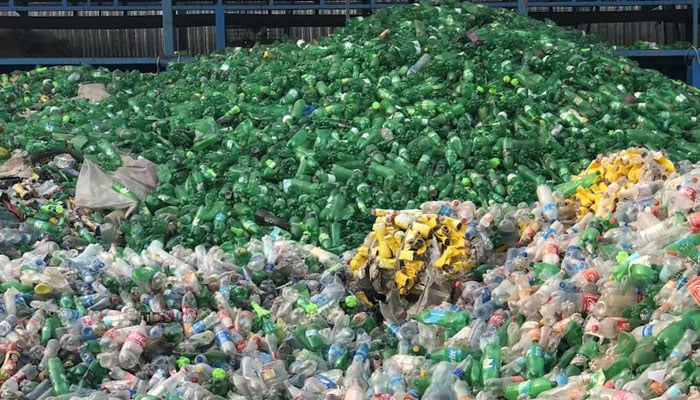Pakistan’s Plastic Pollution Emergency: Waste Mismanagement, Health Hazards & the Road to Circulari
August 30, 2025

Plastics pose a serious threat to humans and the environment. WWF-Pakistan
Details
On a humid June morning in Karachi, Aslam, a municipal worker, wades knee-deep into a drain choked with polythene bags and broken plastic bottles. The stench is overpowering, but for him it’s routine — every week, he clears the same spot, knowing the next rain will wash more waste in from the streets.
He’s not alone in fighting a losing battle. Pakistan produces nearly 2 million tonnes of plastic waste every year, according to WWF-Pakistan, and a staggering 86% of it is mismanaged — dumped in open plots, left in overflowing bins, or washed into rivers. That means more than 1.7 million tonnes of plastic leak into the environment annually. And here’s the real punch: only 3–10% of that ever gets recycled.
From bins to rivers — the invisible journey
Once a bottle, wrapper, or bag leaves our hands, it enters a fragmented system. In many cities, only half of municipal waste is collected. The rest — mostly lightweight packaging and single-use plastic — travels with the wind or rain, eventually reaching rivers and, ultimately, the Arabian Sea. There, it breaks into microplastics small enough to be eaten by fish, ingested by seabirds, or mixed into the very salt on our tables.
Floods, fish, and food
Plastic damage isn’t just aesthetic. In 2022, Karachi’s drainage system was so clogged that heavy rains turned streets into canals. Environmental experts linked much of the blockage to plastic debris. Microplastics — tiny fragments invisible to the naked eye — are now being detected in Pakistan’s freshwater systems and marine life, raising alarms about food safety. Global studies suggest humans may ingest tens of thousands of these particles each year, and Pakistani researchers warn the local numbers are climbing.
The turning point — or a missed chance?
In April 2025, Pakistan launched its National Plastic Action Roadmap (NPAP) with support from the UNDP and the World Economic Forum. It’s an ambitious plan: build recycling infrastructure, introduce extended producer responsibility (EPR) so companies help fund waste recovery, and push for eco-friendly alternatives. But a roadmap is only as good as its implementation — and Pakistan’s track record shows enforcement gaps.
One bright spot is Islamabad. The capital has intensified enforcement of its single-use plastic ban, seizing banned products from markets and issuing fines. The raids make headlines, and shopkeepers are slowly switching to cloth bags. But in cities without strong enforcement or affordable alternatives, change is far slower.
What a circular Pakistan could look like
Imagine if Aslam’s drain never clogged because the plastic never reached it. In a circular economy, bottles are collected and turned into new bottles, films are recycled into pellets for new packaging, and informal waste pickers are formally employed with fair wages and safety gear.
WWF estimates that Pakistan could drastically reduce leakage by scaling up collection, sorting, and recycling — but it requires investment, political will, and industry cooperation. The opportunity isn’t just environmental; it’s economic. Plastic has value when recovered and reprocessing it locally could create thousands of jobs.
The choice ahead
Right now, Pakistan stands at a crossroads. Continue business as usual, and the country will drown in its own waste — with clogged drains, polluted rivers, and plastic-laden food becoming the norm or act decisively: enforce bans, fund infrastructure, engage producers, and turn the tide toward circularity.
Aslam may still be clearing drains next year, but if the NPAP becomes more than a document on a shelf, maybe one day his job will shift from fighting waste to helping recycle it.
That’s a future worth investing in — and the clock is ticking.
